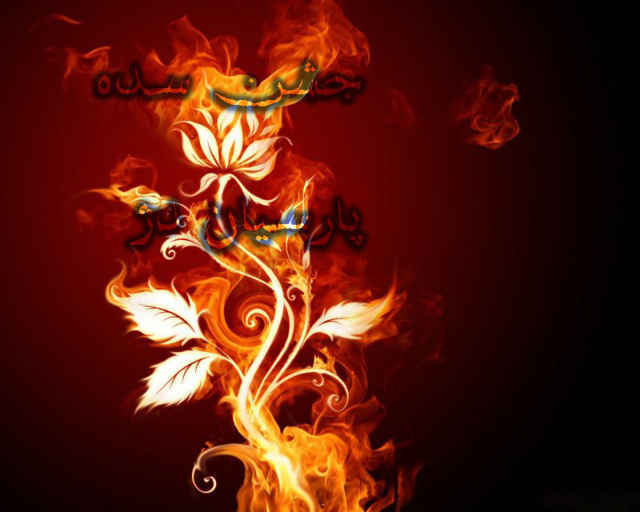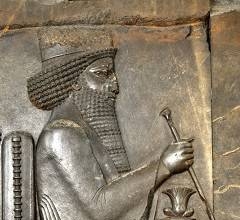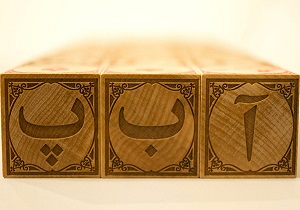If today we forget national festivals and rituals, that means we have forgotten being Iranian, so let's celebrate national festivals as grandly as possible.
Due to the importance of this national holiday, I decided to prepare a complete and comprehensive article with sources for you dear Persians of Dej and fellow countrymen. (Dedicated to all Iranian friends)
Sadeh festival is one of the Iranian festivals that is celebrated at the beginning of the 10th evening of Bahman month, which is November day of Bahman month.. "Sadeh" festival is the biggest fire festival and one of the oldest rituals known in ancient Iran.. In this celebration, at the beginning of the evening of the 10th of Bahman, all the people of the Iranian lands lit fires on the heights of the mountains and on the roofs of the houses, and they are still lit more or less..
The people of different regions sing different hymns and songs by the flames and according to their language and culture and wish for the cold to go away and the warmth to come..
Also, in some areas, they engage in mass singing, games and shows.
The century celebration is a national celebration of Iranians and is not dedicated to a particular religion or group.
Some scholars believe that the name Sedeh is derived from hundred. Aborihan Baruni writes: "Sedeh Govind means hundred and it is the memory of Ardeshir Babkan, and in the cause and reason of this celebration, they said that whenever they count the days and nights separately, the number one hundred is obtained between that and the end of the year, and some say the reason is that on this day, the descendants of Kyomarth – first father – There were a hundred of them and they made one of them king over all, and some believe that on this day the children of Meshi and Meshianeh reached a hundred and also came: "The number of children of Adam Abul Bashar reached one hundred on this day. ”»
Another opinion is that the famous century is the 100th day of winter in Mithraic chronology. In the ancient calendar of Iranians, Mehrayin was a 150-day winter and a 210-day summer.
Since the beginning of winter (First of November) It was 100 days until 10th of Bahman, which is the celebration of the century, and from 10th of Bahman to Nowruz and the first of spring, there were 50 days and 50 nights.. And due to the fact that from this day on, man has achieved fire, the night is as bright, warm and alive as the day, and the nights are also counted..
Another reason for honoring this night is that Iranians considered the two middle months of winter, Di and Bahman, very difficult and when the devil became strong, and they held special prayers for the end of these two months.. From the night of Cheleh, which was also called the Great Cheleh, and in which Meher was reborn to fight against the devil, until the 10th night of Bahman, which was called the celebration of Sedeh and Cheleh Kochok, is equal to 40 days.. And because of the fire (The embodiment of warmth, light and life) It was discovered on the day of Sedeh and another means to fight against the devil and according to the ritual, it made the night light like day, from the night of Cheleh Koch to the first of March, 20 days and 20 nights. (A total of forty nights and days) Is.
One of the signs of the connection between these two phenomena is the ceremony that is held among the tribes of Sirjan and Baft:
On the night of the 10th of Bahman, a big fire called the century celebration fire, with forty branches of pruned trees, which is the symbol of the forty days of "big fire", is lit and sung in Deh Barmi square.:
Sede Sedeh Ghani/ Forty Burned Logs/ Winter stillness
And some have said that this designation is on the occasion of a hundred days before the harvest and the height of the grain.
Mehrdad Bahar in the book "Research on Iran's Culture" and Reza Moradi Ghiyathabadi in the book mentioned above, believe that Sadeh in the Avestan language means rising and rising and has nothing to do with the number 100.. The number "sed" is expressed as "hundred", while the word "sedh" is expressed as "sadaq"..
If the first day of winter (The day after Yalda night) Consider another birthday for Sun or Mehr, it can be considered as an ancient and living Iranian religion in harmony with celebrating the tenth and fortieth birthdays.. (In all the provinces of the country and Iranian territories, the ceremony of celebrating the 10th and 40th birth of a child can be seen) and this word "sada" (Month's name) which means finding and revealing, in ancient Iran it was sadok and in middle Persian it was sadag, and the Arabic words sazq and nusazq (Maarab Nawsdah) It comes from. The narratives that interpret the celebration of the century as one hundred days of winter or fifty nights and fifty days before Nowruz are all newer creations and are not found in old texts..
Century from a mythological point of view
Among the myths of the century celebration, only one refers to the origin of fire. Ferdowsi says: "Hoshang, king of Pishdadi, who is attributed to him the way of farming, digging kariz, planting trees..., one day he saw a snake at the foot of the mountain and picked up a stone and threw it at the snake and the snake ran away.. But from the impact of the stones, there was a spark and fire appeared." Both in the book "Al-Tafhim" and "Atar al-Baqiyyah" by Abu Rihan, there is no mention of fire, but it is considered to be the kindling of fire on the roofs, which was done by the order of Fereydun, and it is stated in Nowruznameh that: "Afridon, on the same day that Zahhak was born, the celebration of Sedah Barnahad was celebrated and the people, who had risen from the oppression of Zahhak, liked it and because of the good omen, you celebrated that day and every year until today, the ritual of those good kings of the covenant in Iran and far They will do it."
century from a historical perspective
The story of the emergence of fire and the foundation of the Sedeh festival is mentioned in the Shahnameh in such a way that Hoshang and some of his relatives were passing through the mountain when a black snake appeared.. Houshang picked up a big stone and threw it towards it. The stone hit the mountain and the fire started from the collision of the stones.[۱۴] According to Ferdowsi:
When he came to the expensive stone, the stone was broken, both that and this stone were broken
A fog emerged from both the heart stones and became a rock from the Azarang fog
Jahandar prayed before Jahan Afarin and sang Afarin
When Foroughi gave him such a gift, the same fire then placed Qiblah
Someone celebrated that night and the wind blew the name of that celebration auspicious
The story of the discovery of fire during Hoshang's time was never believed by Iranians and is a newer creation. This hypothesis has attracted the attention of most scholars of the Shahnameh, and among other things, in the corrected versions of Mr. Jalal Khaleghi Motlaq and Mustafa Jihouni, the story of the discovery of fire has been included among the added verses of the Shahnameh for many reasons..
On the one hand, this story is not mentioned in any of the historical texts before the Shahnameh and sometimes after it, and we also know that the discovery of fire is much older than the Hoshang era, which according to the references in the Shahnameh about the way and achievements of human life in that period. (Making small stone tools, settlement, beginning of cultivation and domestication of some animals), should correspond to a period called "Mesolithic/Mesolithic" in archeology (About 15,000 to 10,000 years ago) is read. And on the other hand, these verses are in some earlier versions of the Shahnameh, including the oldest (Florence manuscript) Does not exist.
According to the writings of historians such as Biruni, Bayhaghi, Gardizi, the Sade festival is one of the three great festivals of Iranians, which lasted until the end of the Khwarezm Shahs and the Mongol invasion, and both the sultans and the amirs and the common people celebrated this festival.. The most famous and biggest celebration of the century was held in the time of Mardavij in 323 AH in Isfahan, and as mentioned in the history of Beyhaqi, another celebration of the century that is remembered by the people is the celebration that was held during the reign of Sultan Masoud Ghaznavi in 430 AH.. [۱] In any case, the longevity of the century in Iranian culture owes a lot to the various Iranian ethnic groups. Kerman has been the cradle of the Sede celebration for the past eighty years, and every year the most magnificent Sede celebration is held there by all the people.. In the years after the Islamic revolution, Zoroastrians organize this celebration with new methods that have no historical precedent..
Ruhol Amini, who is Kermani himself, tells about the celebration of Sadeh in Kerman: "The people of Kermani celebrate this festival more magnificently than other occasions. It is still customary in Kerman that farmers sprinkle fire ashes on their fields, because they believe that the ashes of the fire bless the land for centuries. He continues: "In the not-so-distant past, this ceremony was held on rooftops. This is a public celebration. This ceremony has never been done secretly and has always been held in deserts and plains with the presence of a large number of people.. "They still close schools in Kerman on the day of the centenary celebration."
Despite the passage of thousands of years since the celebration of the first century, today there have been no significant changes in the celebration of this celebration. Dr. Ruhol Amini, who follows the changes of rituals over time, believes that this ritual has been so strong that it has managed to preserve itself and he says referring to a memory.: "Even during the Iran-Iraq war, although the glory of the century celebration was reduced, people still gathered together in Badaghabad, Kerman, on the 10th day of Bahman. (The garden where the centenary was usually celebrated until a few years ago) They were gathering. Since they set fire to the century, this festival is also called the burning of the century.
Rohol Amini tells an interesting story about Kerman's century burning incident in the 1940s, when this custom had just been revived.: "Near evening, two Moyeds, tulips in hand, come out of the garden in white clothes, the whisperers approach the Sedeh and circle it three times from the right side.. Then they set fire to this threshing wood with the flame of tulips from four sides. It takes hours for the flames and the heat of the fire to subside and people, especially teenagers and young people, can approach the scattered bushes to jump over the fire.. In the past, the horsemen who were waiting for the flames to subside used to set themselves on fire earlier than others and perform.. Farmers tried to take some of the ashes of the century and bring heat to their fields as a sign of the end of the cold winter.. "Participants were returning home little by little, but there were not a few young people who stayed around the century until midnight." In this night, the heat star comes to earth.
Century from a religious point of view
Lighting the fire for the celebration of the century of 2009 by Mobdan Zoroastrian
This celebration is a reminder of the importance of light, fire and energy. A light that is separate from God and is not separate from God. [۱۵] As it appears from the historical books and documents, the celebration of the century does not have a religious aspect and all the stories related to it are non-religious, and it is mostly considered an ancient and national celebration, and the true heir of the celebration of the century is not only Iranians and Aryans, but also a legacy that belongs to many neighboring countries of Iran. made way.
In none of the Pahlavi texts and Zoroastrian sources of the Sasanian era is there a name of the Sedeh celebration and its ceremony, and it is speculated that this celebration was in conflict with the Zoroastrian tradition..
Today, this celebration is widespread among many Zoroastrians in Iran and outside Iran. In his youth, Sadegh Hedayat saw the Zoroastrian century celebration in Kerman and reports as follows: "The centenary cremation is a festival that the Zoroastrians of Kerman still celebrate in memory of Jamshid and the rituals of ancient Iran, and for this they have set aside endowments in Kerman.. For fifty days to Nowruz, the kharvars gather bushes and firewood in Gobar, Baghche neighborhood of Bodaghabad..
Next to this garden there is a house like a mosque and the elders of Mobad invite the elders of the city and even foreigners.. In this ritual, a lot of drinks, sweets and fruits are arranged, and at sunset, two people light two tulips and set fire to the bushes and sing a special song. They go around the fire and sing this song:
Dam to century, thirty to herd, fifty to Nowruz
They drink and the celebration ends amid cheers..
In many central parts of Iran, such as Kerman, the celebration of the century or the burning of the century among all sections of the people of Kerman is Muslim. (Shia and Sunni), Zoroastrian, Christian, Jewish and… It is popular as a national holiday.
The celebration of the century
Hakim Omar Khayyam writes in the book Nowruznameh:
"Each year to this day, Sedeh is celebrated by the good-willed kings in Iran and Turan. After that, until today, the time of this festival was forgotten and only Zoroastrians, who were and are the guardians of ancient traditions, celebrate this ancient festival. they had."
Although it is written that the man of Avij Ziyari was in the year 323 Hijri (10th century) He celebrated this celebration in Isfahan. Also, during the Ghaznavid period, this celebration flourished again, and the famous poet of Iran, Erani, recited an ode about the century in front of Sultan Mahmud in one of the celebrations of the century, the beginning of which is this.:
The century of celebration of King is called Zafridon and is remembered by Jam
In ancient Iran and among Iranian Zoroastrians, this celebration begins near sunset with bonfires, and today, with the same tradition, mountains of bushes and firewood are provided outside the city, while worshipers whisper the tulips in the hands of Avesta. It was lit and the people who gathered there prayed the fire prayer. This ceremony was carried out outside the city by the Zoroastrian Association of Kerman, and all the people, men and women, Zoroastrian and Muslim, gathered there and were happy. They participate in this celebration in Tehran for twenty-five years, which has been held with grandeur by Forohar Dar Bagh organization (Kush) Verjavand will be held. In Shiraz, five years of this celebration, thanks to my wife Prichher (Dr. Farhang Mehr's wife)And with the help of Zoroastrians, Artesians and people of Shiraz, it is held in front of Zoroastrian Kaaba, near Persepolis..
The extent of the celebration of the century
In the past, the celebration of the century in the vast expanse of Asia Minor (Anatolia) As far as Xinjiang province of China, i.e. throughout Iran, it has been prevalent among all people, regardless of ethnicity or religious orientation, and it has been mentioned in written historical accounts like Nowruz..
Today, this ceremony among the villagers of northeastern Iran (Like Azadvar and the villages of Dasht Jovin), in parts of Afghanistan and Central Asia (with the name "Kherpachar")in Kurdistan (around Sulaymaniyah and Oramanat), central areas of Iran (with the names "Hele-Hele", "Kordeh", "Shepherds' Festival") And it is popular among some villagers and nomads of Lorestan, Kurdistan, Azerbaijan and Kerman.
The celebration of the century is known by different names in different regions: In Khorasan, it is known as "Sareh", in the vicinity of Arak, "Shepherds' Festival", in Khomin, "Kordeh", in Dilijan, as "HaleHale", and in Badakhshan, Tajikistan, as "Kherpachar".. In Farahan, Sangsar Semnan and other places, the four days before and after Sedeh are considered "Charochar" and the coldest nights, in which Sedeh is located in the middle..
Scientific and historical etymology
The celebration of the century has never been related to any of the ancient tribes or religions and has always been a national celebration derived from climatic conditions and cosmic events.. The long history of this ceremony has caused numerous and contradictory narratives to be recorded in old sources about the reasons for holding it.
One of the reasons cited for the emergence of the century is the discovery of fire by Hoshang Shah in Ferdowsi's Shahnameh.. It should be said that the story of the discovery of fire during Hoshang's time was never believed by Iranians and is a newer creation. According to what was said earlier in the historical perspective, this hypothesis is almost rejected.
The discovery of this celebration (Like many other occasions) There is not just one reason, but several reasons, the simultaneity of which adds to the importance of the celebration. First of all, there are many references that come from folk stories and songs; It shows that people are fed up with the frost and wish for the cold to go away or to reduce its intensity, and this point is the most important reason for the emergence of this ceremony and for lighting fires in the symbolic fight against the cold..
Apart from this, it seems that several cosmic events were not without influence in the origin of this religion.. First, the century celebration on the 40th day of Yalda night or the night of the birth of the sun (Winter revelution) It is held and it is the celebration of the 40th birthday of the sun. Second, the 10th of Bahman is one of the two times of the year when in the upper latitudes of Iran, the sky is completely dark for 12 hours..
Thirdly, we know that the connection between the word "hundred" and the number "hundred" has not yet been proven. In the Avestan language, the word "Sad" has an interesting meaning both in the meaning of "setting/setting" and in its opposite meaning "rising/rising".. Also, the word "Sazeh" in Avesta means both sunrise and sunset, which is thought to be derived from the following event.: About five thousand years ago and in the first nights of the month of Bahman, an interesting event took place, which is not likely to be connected with the rituals of the century celebration..
This event consists of the simultaneous rising and setting of two bright and shining stars in the sky, named "Samak Rameh" and "Nasr Vaqat" in the north-east and north-west of the sky.. At that time, the golden star "Samak Rameh" had just risen in the sky of the upper latitudes of Iran and in the north-eastern horizon, and the white and bright star "True Eagle" was ready to set at the same time and in the north-western horizon.. Probably, the simultaneous rising and setting of two bright stars in the sky has led to the discovery of the double and opposite meaning of the Avestan words "Sed" and "Sadeh", and is also another factor for the Sedeh celebration..
The basics (References)
^ Athar al-Baqiyyah, Chapter 9, Abu Rihan Biruni
↑ As Jabir Elemari in the book "The Manifestation of Twelve Months" and Reza Moradi Ghiyathabadi in the book "Nowruz Nameh"
↑ Zoroastrian philosophy book written by Dr. Farhang Mehr, 7th edition, p. 190
↑ Zoroastrian philosophy book written by Dr. Farhang Mehr, 7th edition, page 191
↑ Introduction to the celebration of the century – arrive – Zoroastrian analytical news website
↑ Zoroastrian philosophy book written by Dr. Farhang Mehr, 7th edition, page 191
Ferdowsi's Shahnameh, edited by Jalal Khaleghi Motlaq, American edition: 1986, volume one.
Absolute creation, glory. Gol Ranghai Kohn, Tehran: Drop publication, 1380.
Moradi Ghayasabadi, Reza. Mehrgan and Sedeh celebrations, Tehran: Iranian researches, 2004.
Rajaee Bukharaee, Ahmad Ali. Selected Ferdowsi's Shahnameh, by Katayoun Mazdapour, Tehran: Research Institute of Humanities and Cultural Studies, third edition 2011, ISBN 964-426-177-1
Click the image below to download the text of the century celebration








درود
Let the celebration of the centenary of Homayun be
Can you put my logo on your website?
درود
Please refer to this section:
http://url.parsiandej.ir/cQYry
If you do not meet the desired conditions, you can contact us from the contact section(your manager) keep in touch
It is possible to register your web address through the sponsorship plan
Stay strong. Goodbye
O Messiah who is always hot
There are few and many people who care about obscenity
O Messiah, whose message is purity
Pandas are few and far between people
درود
May the celebration of the century be blessed
Tonight I celebrated the century with dear Zoroastrians living in Tehran, I was very happy
May all Iranians celebrate this day
درود
In the hope of that day, Lady Fatima